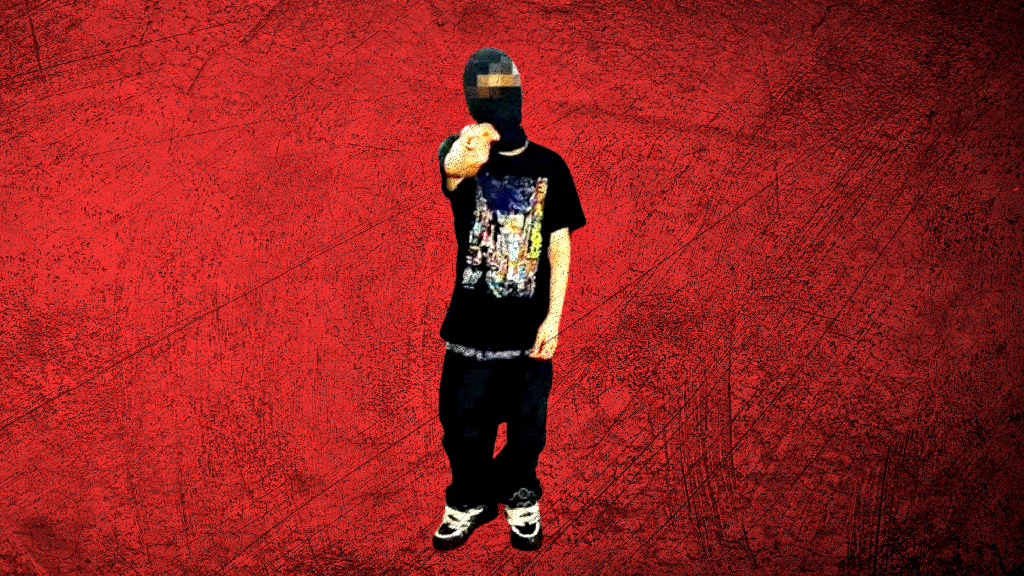The Biden-Harris administration has drawn sharp criticism for its immigration policies, which opponents argue have turned every community in the United States into a “border town.” This sentiment is particularly evident in cities like New York, which has experienced a surge in crime and lawlessness, linked in part to the influx of unvetted illegal migrants. A recent case involving a 15-year-old Venezuelan migrant underscores this troubling trend; the youth has been arrested multiple times for crimes like robbery and released each time, illustrating perceived failures in the juvenile justice system. This situation raises concerns about the safety of communities and the capacity of existing legal frameworks to handle juvenile offenders who engage in serious criminal activities.
The teen, known as a member of a violent gang called “Los Diablos de la 42,” is connected to the larger criminal organization Tren de Aragua, which has roots in Venezuela. His recent arrest for a knifepoint robbery in New York adds to a troubling pattern, as he has already racked up eleven prior arrests for offenses that include robbery and grand larceny, all resulting in his release due to lenient juvenile laws. Sharing the nickname “Little Devil,” he exemplifies a larger issue with how juvenile crime is managed in New York—a city that has become a battleground for gangs exploiting vulnerable young people drawn into crime. With a court date looming for his immigration status, questions remain about the intersection of immigration policy and criminal justice in cases like his.
Reports indicate that “Little Devil” and a group of approximately 20 other migrant teens, who collectively refer to themselves as “Diablos de la 42,” are wreaking havoc throughout New York City, particularly in high-profile areas like Times Square. Their operations, often coordinated from a city-funded shelter at the Roosevelt Hotel, involve a range of criminal activities, from purse snatching to armed robbery. The increasing audacity of these crimes, paired with their juvenile status, places authorities in a precarious position where traditional law enforcement tactics seem ineffective. While law enforcement is aware of these gangs and their activities, the existing legal frameworks limit their ability to act decisively.
Critics of New York’s immigration policies highlight the challenges posed by its “sanctuary status,” which restricts police access to migrant shelters. This policy complicates the efforts of law enforcement agencies trying to curtail gang operations that flourish in these facilities. Without the ability to investigate potential criminal enterprises effectively, gangs continue to recruit and perpetrate violence with little risk of apprehension. The young migrants involved, many being drawn into criminal activities by older gang members, represent a significant challenge for policymakers and law enforcement alike, as communities suffer the consequences of unchecked gang violence.
The situation requires urgent attention from both local and state lawmakers, as it serves as a stark reminder of the potential ramifications of mismanaged immigration policy and lenient juvenile justice practices. Law enforcement insiders express concern that without significant reforms or a restructuring of how juvenile offenders are handled, the cycle of crime is unlikely to break. Initiatives to instigate meaningful change must involve stakeholders across the board—legislators, community leaders, and law enforcement agencies—who all play a role in creating a more cohesive and effective response to emerging threats posed by juvenile gangs.
In summary, the rise of gangs like “Los Diablos de la 42” and the challenges presented by unvetted illegal migrants highlight a crucial moment for New York and other cities facing similar crises. As policies from the federal level down affect how states manage immigrant populations and juvenile offenders, the need for comprehensive solutions is more pressing than ever. Addressing crime, fostering community safety, and reforming juvenile justice are all intertwined issues that, if properly tackled, could potentially restore order to areas currently plagued by violence and insecurity. The youth involved, like the teen dubbed “Little Devil,” serve not just as criminals but as reflections of larger systemic issues that need addressing, requiring collaborative and decisive action from all corners of society.

